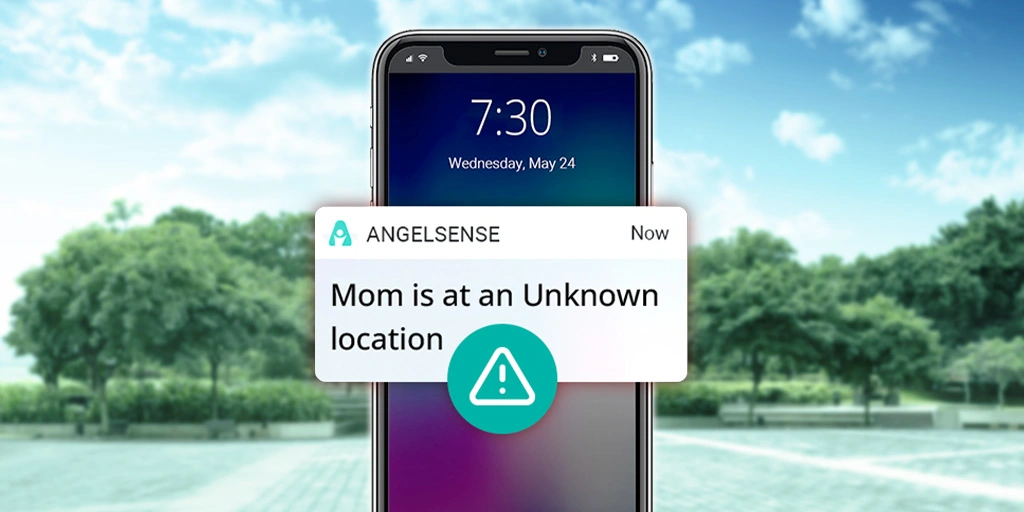Assistive Technology for Dementia: Enhancing Quality of Life and Independence
Updated on May 22, 2024In the past decade, assistive technology for dementia has made significant progress, transforming the lives of both individuals with dementia and their caregivers. From simple reminders to sophisticated monitoring systems, these innovations have improved quality of life by enhancing independence, safety, and overall well-being. In this blog post, we’ll explore the central role assistive technology can play in dementia care, highlighting its importance in empowering individuals, simplifying caregiver responsibilities, and enabling a sense of dignity and autonomy among the challenges of cognitive decline.

Different Types of Assistive Technology for Dementia and Their Benefits
The term assistive technology can be hard to pin down because it includes a wide variety of distinct technologies and use cases. All of them offer ways to make life easier for those living with dementia, however their level of impact can range from ‘nice to have’ to truly life-changing. While pill dispensers with alarms can quite literally be indispensable, there are comprehensive solutions which actually enable individuals to safely stay in their own homes for longer by combining multiple functions such as safety, location monitoring, and communication.
Here’s a brief overview of the most common categories of assistive technology for dementia:
- Memory aids are a prominent category that includes things like electronic calendars, pill dispensers with alarms, and voice-activated assistants like smart speakers. These aids make it easier to remember important appointments, medication schedules, and daily tasks, so that individuals with dementia can reduce their reliance on caregivers and foster a sense of independence.
- Safety devices are critical, serving to prevent accidents and ensure well-being. They allow caregivers to monitor their loved one’s location and prevent wandering, while motion sensors detect falls or unusual activity. Smart home systems offer remote monitoring and emergency response features.
- Communication tools are designed to facilitate everyday communication needs as well as to maintain social connections. Simplified telephones with large buttons and photo speed dialing, alongside video calling apps for virtual communication, make it easier to stay connected with family and friends. Additionally, language support apps can aid those experiencing difficulties with verbal communication.
- Cognitive stimulation tools engage and promote mental acuity to preserve cognitive function. These tools encompass a variety of puzzle games, memory exercises, reminiscence therapy apps, and virtual reality simulations designed to evoke positive memories and stimulate cognitive skills.
While pill dispensers with alarms can quite literally be indispensable, there are comprehensive solutions which actually enable individuals to safely stay in their own homes for longer by combining multiple functions such as safety, tracking, and communication.

Real-life Examples and Success Stories
The most effective forms of assistive technology are ones that are designed to address the specific challenges posed by dementia, covering multiple use cases. One such solution is AngelSense, which offers an AI-powered solution that includes a watch tracking device, assistive speakerphone, live monitoring, and proactive alerts — all from a single platform.
Carrie T. has been using AngelSense with her 73-year-old mother, who is in the middle stages of dementia.
The live monitoring feature makes it easy for her mother to go out on daily walks without worrying about getting lost or forgetting her way home. If she does wander off, her family and caregivers are instantly notified. Using the two-way assistive communication lets them reach the speakerphone on Mom’s AngelSense device at the click of a button. They can then guide her back to the correct route using the live map feature. Using AngelSense has simplified the entire family’s transition and experience of supporting Mom’s cognitive decline.

Louise and her husband, David, who has mild dementia, have also successfully integrated AngelSense into their lives to maintain independence and ease the challenges of caregiving. Louise shares:
After David got lost in our woods (and eventually found his way home), I did some research on devices I could use to keep track of him and found AngelSense. The peace of mind I have knowing I can find him if things go wrong is immense. It also gives David great peace of mind that he knows he can press the button and it’ll call me. Thank you so much for this wonderful product.

Challenges and Considerations
Navigating assistive technology for dementia can present some initial hurdles, but the trade-offs more than make up for the effort. The first challenge you may encounter is in selecting the right solution, which can feel overwhelming as it requires careful consideration and a bit of trial and error to find what works best. Ease of use is essential; nobody wants to grapple with overly complicated gadgets. Privacy concerns are another issue. Implementing assistive technology is about striking a balance between safety and respect for personal boundaries.
Ultimately, ongoing support and training are key for success. Like learning any new skill, mastering new technology requires patience and practice, but with the right guidance, it becomes second nature. By considering these challenges thoughtfully and proactively, caregivers and healthcare professionals can maximize the benefits of assistive technology while mitigating potential barriers to adoption.
Future Developments and Innovation
Looking ahead to the horizon of assistive technology for dementia, there is a lot to feel hopeful about. Emerging technologies are poised to revolutionize the landscape. Among these advancements, we see the integration of artificial intelligence, machine learning, Internet of Things, wearables, and virtual reality into the fabric of dementia care.
In this future, homes are transformed into havens of support, with smart systems and IoT devices quietly observing daily routines and ready to signal any anomalies to caregivers or family members. Wearable devices, like trusted companions, diligently monitor vital signs and movement patterns, providing a sense of security and reassurance. Meanwhile, cognitive assistants powered by AI engage in meaningful interactions and offer gentle reminders to navigate daily tasks with ease.
Venturing further, we encounter the therapeutic potential of virtual reality, with immersive experiences that soothe anxiety and stir fond memories. Through VR simulations, individuals find comfort in reliving cherished moments from their past, supporting relaxation and a sense of connection.
Ongoing research and development are critical to the emergence of these technologies, which depend on rigorous evaluation and user feedback for improvement. This kind of refinement ensures that assistive technology for dementia remains accessible, effective, and above all, compassionate.
Conclusion
Assistive technology for dementia has become a lifeline for both individuals living with dementia and their caregivers. From memory aids to safety devices and communication tools, these innovations offer tangible benefits, including increased independence and peace of mind. Despite initial challenges, the rewards are profound, as illustrated by real-life success stories like AngelSense.
Looking forward, the future of dementia care is bright, with emerging technologies expected to further improve quality of life. By embracing these tools with empathy and understanding, we can make a meaningful difference in the lives of those affected by dementia, fostering a future where dignity and comfort are prioritized for all.
FAQ
What are examples of assistive technology in dementia?
Examples of assistive technology in dementia include memory aids like electronic calendars and pill dispensers, safety devices such as GPS trackers and motion sensors, communication tools like simplified telephones and video calling apps, and cognitive stimulation tools like puzzle games and reminiscence therapy apps.
What technology is used to assist with dementia patients?
Technology used to assist dementia patients includes smart home systems for remote monitoring and emergency response, AI-powered solutions like AngelSense that offer tracking, communication, and alerts, and emerging technologies such as IoT devices, wearables, and virtual reality for therapeutic purposes.
What are assistive products for people with dementia?
Assistive products for people with dementia encompass a wide range of devices and tools designed to support memory, safety, communication, and cognitive stimulation. These products include voice-activated assistants, fall detection sensors, language support apps, and interactive memory exercises.
What tools assist with dementia?
Tools that assist with dementia include GPS trackers to prevent wandering, automated medication reminders, simplified communication devices, and cognitive engagement activities like puzzles and memory games. These tools aim to enhance independence, safety, and overall well-being for individuals living with dementia.
Get peace of mind from AngelSense, the groundbreaking AI-based assistive technology designed to enhance safety and peace of mind for individuals with special needs and their families. Our solution ensures you stay connected with your loved ones, empowering a higher level of independence while maintaining safety. Learn more about how AngelSense can make a difference for your family.

